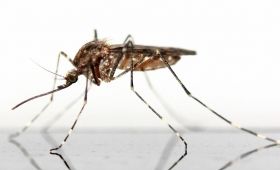Scientists have developed a new therapy to combat deadly bacteria that is infecting hospital patients worldwide. The new therapy—a biocide that is able to target antibiotic-defiant bacteria such as Methicillin-resistant Staphylococcus aureus (MRSA)—was developed by scientists at the University of Waterloo and University of Manitoba. “We wanted to be able to help vulnerable patients suffering from chronic infections,” said Emmanuel Ho, a professor in the School of Pharmacy at the University of Waterloo. “Once they’re infected with a resistant strain of bacteria it’s very difficult to get them well again.”
articles
ML 2.0: Machine learning for many
Today, when an enterprise wants to use machine learning to solve a problem, they have to call in the cavalry. Even a simple problem requires multiple data scientists, machine learning experts, and domain experts to come together to agree on priorities and exchange data and information.
This process is often inefficient, and it takes months to get results. It also only solves the problem immediate at hand. The next time something comes up, the enterprise has to do the same thing all over again.
One group of MIT researchers wondered, "What if we tried another strategy? What if we created automation tools that enable the subject matter experts to use ML, in order to solve these problems themselves?"
As summers get warmer, more rain may not be better than less
Warm, wet summers are historically unusual and could bring unexpected disruptions to ecosystems and society, according to new research from the University of British Columbia.
UW Research: Tropical Forest Response to Drought Depends on Age
Tropical trees respond to drought differently depending on their ages, according to new research led by a postdoctoral scientist at the University of Wyoming.
Mario Bretfeld, who works in the lab of UW Department of Botany Professor Brent Ewers, is the lead author of an article that appears today (Monday) in the journal New Phytologist, one of the top journals in the field of plant controls over the water cycle. The research was conducted in collaboration with the Smithsonian Tropical Research Institute (STRI).
Test Spots Malaria in Two Minutes, Without Blood
Magnetism and light have been combined in a test that can diagnose malaria in under two minutes without the need to take blood.
New Test Extends Window for Accurate Detection of Zika
Diagnosis of Zika infection is complex. Molecular tests for exposure are only reliable in the first two to three weeks after infection while the virus is circulating in the bloodstream. Antibody tests are confounded by cross-reactivity of antibodies to Zika with dengue, yellow fever, and Japanese encephalitis viruses following infection or vaccination. A new blood test called ZIKV-NS2B-concat ELISA is faster, less expensive, and extends the window of accurate detection from weeks to months after the onset of infection, giving clinicians a powerful new tool to screen for Zika throughout pregnancy.










